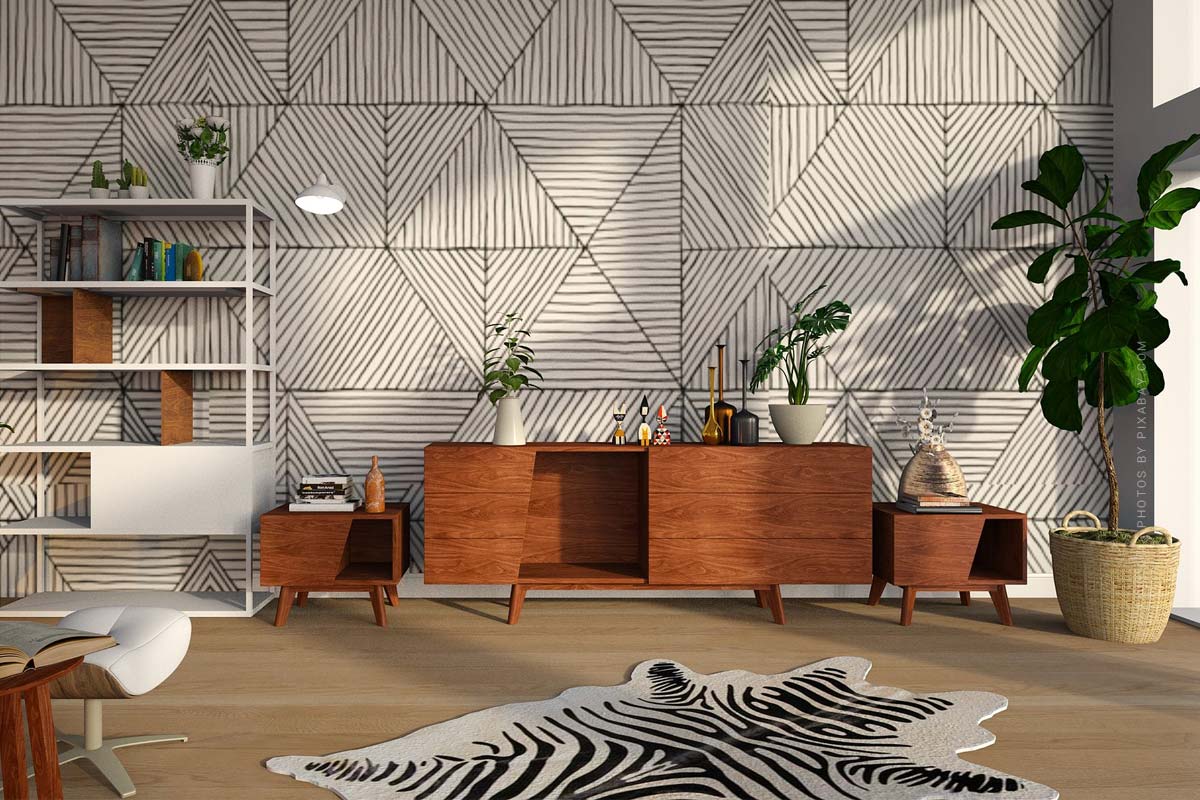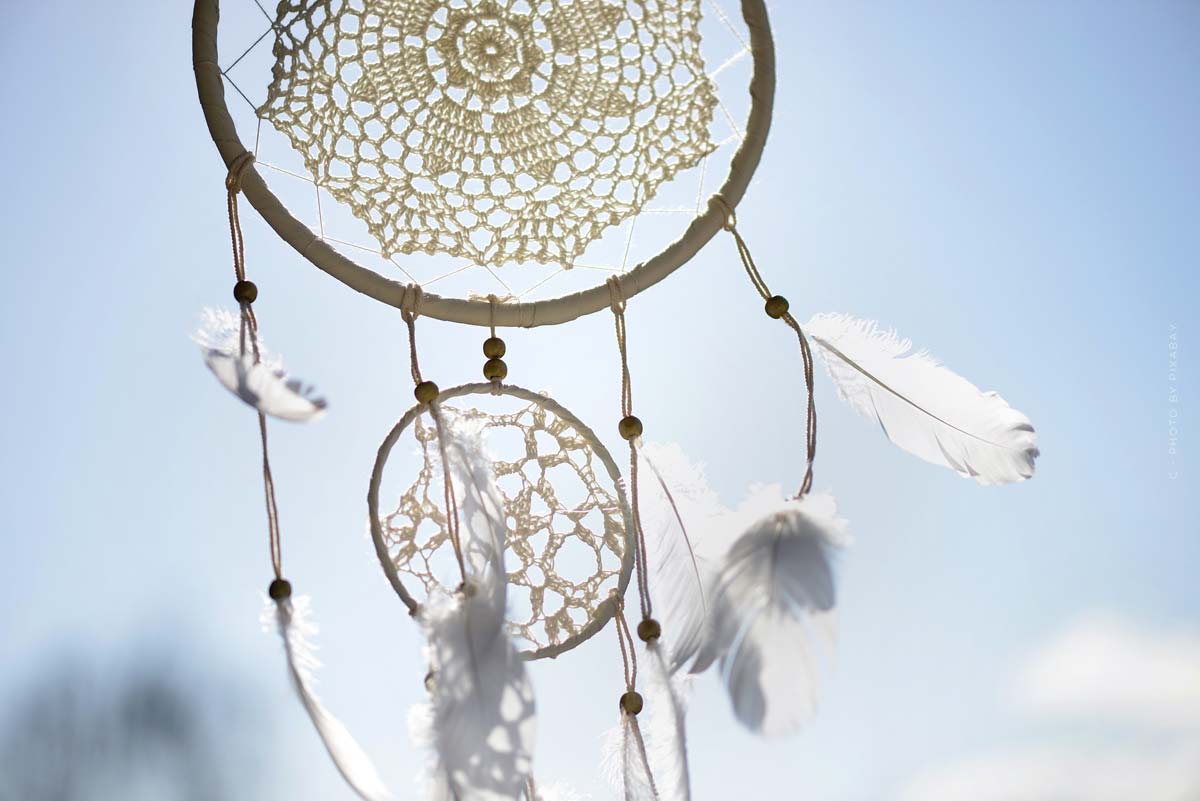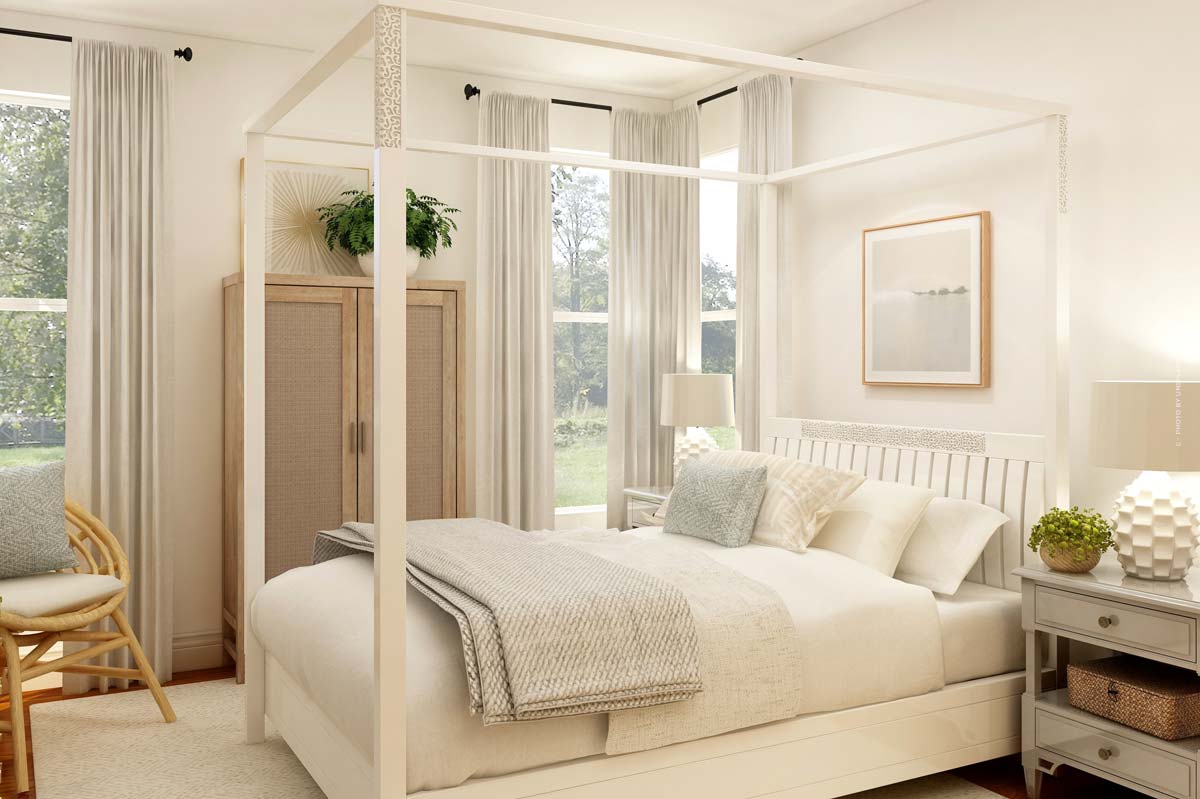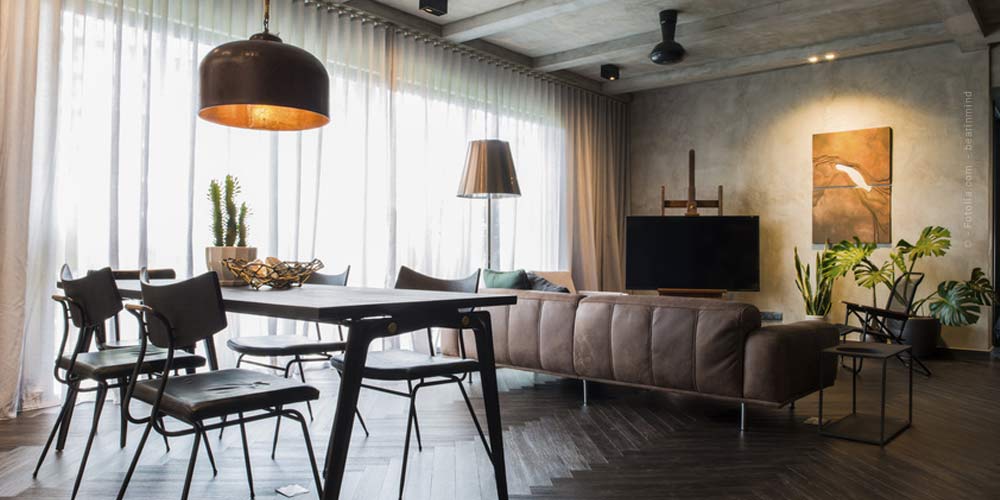Retro & vintage furnishing: Furnish in 50s, 60s or 70s style with furniture, lamps and carpets
Retro / Vintage furnishings – Your home could do with some real eye-catchers? Then vintage furniture is exactly what you should be looking for. Not only are the 80s reflected in current fashion, but also in interior design the 80s are on the rise again and more popular than ever. The combination of modern and vintage makes every home something special. Vintage furniture allows each room to tell its own individual story and shine again in new splendor. What there is to know when putting together vintage or retro furniture and what makes up the interior style, you can find out all that here. Let yourself be inspired by past decades! Click here to return to the overview: Furnishing styles.
Furnishing in vintage / retro style: colourful lamps, furniture & carpets
Vintage is the combination of different styles, which still looks coherent despite many colors and shapes. Old pieces of furniture from the 20th century are particularly in demand. However, the older the cooler and more iconic. They give every room that special touch and look exclusive. The special thing about vintage style is that it can easily be mixed with other furnishing styles. Vintage is even considered the forerunner of Shabby Chic, which means that a new type of interior design can be derived from the vintage style.
Here are examples of how to combine vintage with another style:
- Vintage x Skandi style
- Vintage x Boho Style
- Vintage x Retro
- Vintage x country style
Are you interested in furniture & interior design? Then take a look at our guide for furniture brands & interior design!
Color Choices & Wall Colors: Colorful, wild & design without borders
With vintage style, there are no real colour families that have to be adhered to or observed. Here, we don’t look at pantone colours to see which colour the furniture should have, but rather the individual piece of furniture is in the foreground. Each decade has its own trend colours and specific shapes, from which you can tell approximately which year the furniture comes from. With bright and flashy colors, one usually starts from the 70s to the 90s, from the 2000s, the choice of colors became more dignified and modernity came to the fore. Vintage pieces are usually brought into a room as an eye-catcher, because each vintage piece is individual and unique, especially by design and the degree of wear.
Individuality: furniture from several decades – unique pieces & highlights
Every vintage piece has its own effect. Behind every piece of vintage furniture is its own individual story. For this reason, each piece is something very special and unique. The more vintage furniture you include in your interior design, the more exciting it becomes. You are a little bit on the trail of time and could almost title it a museum walk if you knew the history of each furnishing component. The peculiarity is that although some furniture was made in series at the time, they have all been owned in different ways and each piece has its own signs of wear and tear.
Flea markets: Vintage Shopping – Treasure hunt for lamps, porcelain & Co.
Nothing to do on Sunday? Then why not stroll through a flea market? At a flea market, if you have the eye and the patience for it, you can find cool clothes as well as real treasures for your interior. Besides no name brands you can also find designer classics. Since several years there are extra vintage flea markets where you can find a whole range of different vintage pieces. These vintage flea markets are next to antique dealers your first port of call if you are looking for matching and unique vintage pieces. Unfortunately, there are no flea markets in Corona times, so now what? For this reason, many have made it their business to sell their vintage pieces online. So that at the moment you can easily shop for fancy vintage furniture online.
Since vintage furniture is so popular, some furniture manufacturers trim their furniture to vintage. However, according to the definition, this is not original vintage furniture, but furniture in the so-called “Shabby Chic”.
DIY / Do it yourself: Retro furnishing with recycling and upcycling
Often, individual vintage components are also combined with new ones. So quasi: from old to new. You buy individual parts and combine them with new ones, so that an exciting and unique piece of furniture is created. DIY is very important when you talk about vintage. You bought an old cabinet because it seems more robust than some new cabinets, but you don’t like the wood? Then you can work on the wood with simple instructions from the Internet or simply paint it with a suitable wood paint. This way you have an old piece with history upgraded and individually adapted to your interior – this is how real furniture lovers are created.
Vintage furniture: time travel with wallpaper, armchair & cabinet
Furniture from the 20th century, especially from the 20s to the 70s, stands for craftsmanship and therefore also for quality. For this reason, many fall back on vintage furniture. At that time, there was no machine assembly line production, but it was still created by hand. Furthermore, mostly high-quality and robust materials were used, which contribute to the stability of the furniture,
Eye-catching vintage style armchairs: sitting on retro fabrics such as velvet or corduroy
When people talk about vintage armchairs, they immediately think of an armchair with a deep seat, wood, chord and a cool upholstery in an eye-catching color or print. Vintage furniture does stand out for its wear and tear, but an upholstery with wear marks does not fall under a nice vintage piece. Unless it is an old leather chair, where wear marks cannot be avoided. Wear and tear on wood, however, is not a bad thing, as it does not affect the comfort of the seat.
Cult sideboard made of wood: cherry wood, oak wood & Co.
As you can see in the first picture, vintage sideboards are real eye-catchers. They radiate quality and cult factor. Since they are mostly made of wood, they also bring besides the style, warmth into a room. You can trim the sideboard with trendy decoration to modern or let it shine with a few retro accessories – there are no limits to creativity in the implementation of vintage.
Ornate lamps as eye-catchers
Vintage style lamps are particularly trendy in interior design. They give every room that certain something. Old lamps pay off mostly by your squiggles, which can be used especially in the country house style or even in the Skandi style. Mostly vintage lamps are in gold (the trend at the moment), made of wood or have a cool lampshade. Through the individuality, a lamp, which is usually only a means to an end, becomes the it-piece of a room.
Retro/Vintage Refrigerator: A lasting trend
Vintage refrigerators are totally on trend, but not just since yesterday, but for a long period of time. When you think of a vintage looking refrigerator, you imagine a refrigerator in eye-catching colors that will enhance any kitchen. Vintage refrigerators are definitely considered modern and not “stale”, so many manufacturers specialize in making vintage refrigerators, making the vintage refrigerator a retro refrigerator. However, new fridges are much more expensive than fridges you would buy from a vintage flea market, however, with a new vintage fridge you are guaranteed that it will work perfectly.
Decades at a glance: 50s, 60s, 70s style
Each decade has its own colours and shapes, shaped by historical events, from which you can later tell which decade the piece of furniture comes from. It is exciting to see how the shapes and colours have developed over the years. The 50’s to 70’s are considered the years in which cult and therefore retro came into being. Do you feel like taking a little trip back in time to the homes of the 50s to 70s? Then read on.
50s furnishings: kidney tables, cocktail chairs & bag lamps
The pageantry of the 1920s was over. The 1950s are considered the post-war period of the 2nd World War. This post-war period can also be reflected in the interior design. Mostly small apartments had to be furnished, because many things were destroyed by the war. In addition, much emphasis was placed on craftsmanship, as the industry had to recover from World War 2. For this reason, robust materials were used, which were handcrafted into furniture. Particular emphasis was placed on the usefulness of the furniture, as it was not allowed to take up too much space, but should still have plenty of storage space. Through patterned, colorful wallpaper was then brought a little life into the drab furnishings.
Egon Eiermann initiated the first series production of furniture in Germany. His popular classics include, for example: tubular steel chair “SE 68”, wicker chair “E 10”, wooden folding chair “SE 18”, or the table frame “Eiermann 1”.
However, these pieces of furniture that shaped the 50s are seen as true classics:
- “Lounge Chair” by Charles and Ray Eames, a combination of leather and wood
- Kidney Tables
- Bag Lamps
- Tulip Lamp
60s furnishings: striking colours & clear shapes
The 1960s were marked by the unimaginable: Germany was divided into two parts, North and West, by the construction of the Wall. In addition to the construction of the wall, but also the Beatles and the raw Stones were on the rise, which shaped the mentality of the people from then on. Due to the establishment of rock, more and more eye-catching colors were used. There was more and more emphasis on interior design, because people could afford it again. In addition, from the 1960s onwards, a new piece of furniture also moved into every living room: The television. Because of this, people spent much more time in their own homes and the comfort in their own homes became more and more important. Orange, brown and olive tones characterized the 60s and became a must in every interior. Among the absolute classics of the 60s are:
- The Panton Chair
- The Ball Chair
- The beanbag “Sacco
70s furnishings: love, peace, bright colours and “weird” furniture
The 70s were marked by the hippies, Saturday Night Fevers and the peace movement: Love, Peace and Freedom. In the 70s flower power was brought into the living room – the shriller, the better. From colorful wallpaper and shrill colors to fancy carpets, more was simply more in the 70s. Inspired by the first moon landing of Apollo 11, many designers relied on spacey and futuristic shapes that gave the home a very special touch.
Since there was a lot going on in interior design in the 70s, you should only go for single eye-catchers in your own decor – unless you want your home to look like old family photo albums.
Famous & Popular Designers of the 50’s-70’s: Top List
The decades were shaped by designers who discovered and implemented new trends. Many of the top interior designers of that time still exist today or are still on everyone’s lips when you think about that time:
- Charles and Ray Eames (Lounge Chair)
- Vitra Founders: Willi and Erika Fehlbaum
- George Nelson
- Verner Panton (Panton Chair)
Combining retro and vintage: Ideas & Tips
If you are brave and like it particularly cult, you can opt for a mixture of retro and vintage. Here you combine eye-catching vintage furniture and accessories with each other, so that a colorful mixture of colors, shapes and patterns is created. Not everyone’s cup of tea, but one thing is for sure: if you want to stand out from the crowd with your interior design, this is the way to do it.
That’s what retro furnishings are all about:
- Carpet or dark wooden floor
- Wall color in orange, red or yellow in combination with a pattern wallpaper
- Furniture, with striking colors and patterns (important, the pattern must not be the same as the wallpaper).
- Decoration in bright colors and with patterns
- Use of a lot of wood
Retro…what is it actually? Features, furniture & meaning
In order to know how to properly combine retro and vintage, you first need to understand what exactly is the difference between the two styles.
Retro furniture is not as trendy as vintage furniture at the moment, as the focus is currently on nude colours and the use of wood in interior design. In Latin, retro means “backwards”, so retro is basically everything that was once hip: “thinking backwards”. Anything where our parents or grandparents say: that’s exactly what I used to wear, or: that’s exactly the sofa we had in our apartment back then. So it’s a throwback to the old days and a revitalization of past trends. Retro goods, however, are not old goods, but new ones. So an old armchair from 1960 is not retro, but vintage. However, if you buy an armchair that is reminiscent of a trend from back then, it is now called retro because you are reviving an old trend. So retro furniture is not found in flea markets, but to buy retro furniture you have to go to a furniture store or shop online.
“The trend toward retro or the classics certainly has something to do with the fact that consumers find it easier to fall back on the familiar than to embrace the new,” says Richard Lampert (design publisher)
Understanding Vintage: Design & Furniture from a bygone era – Charm & History
The term vintage this time does not come from the Latin but from the English and means: venerable, old, exquisite or even excellent. The translation alludes to the fact that vintage refers to old goods that are in good condition, but also show wear and tear. Vintage goods are those that were manufactured between the 1920s and 1970s. However, this period is debatable, many now see goods from the 80s or 90s also as vintage goods.
So the distinction between retro and vintage is easier than you think. Vintage refers exclusively to old goods, which through new use appear again in their former glory, and retro allows old trends to be revived with the help of new goods. So vintage is the precursor to retro. Everything that is called vintage could also be called retro, as far as the goods were produced in modern times oriented to vintage design.











